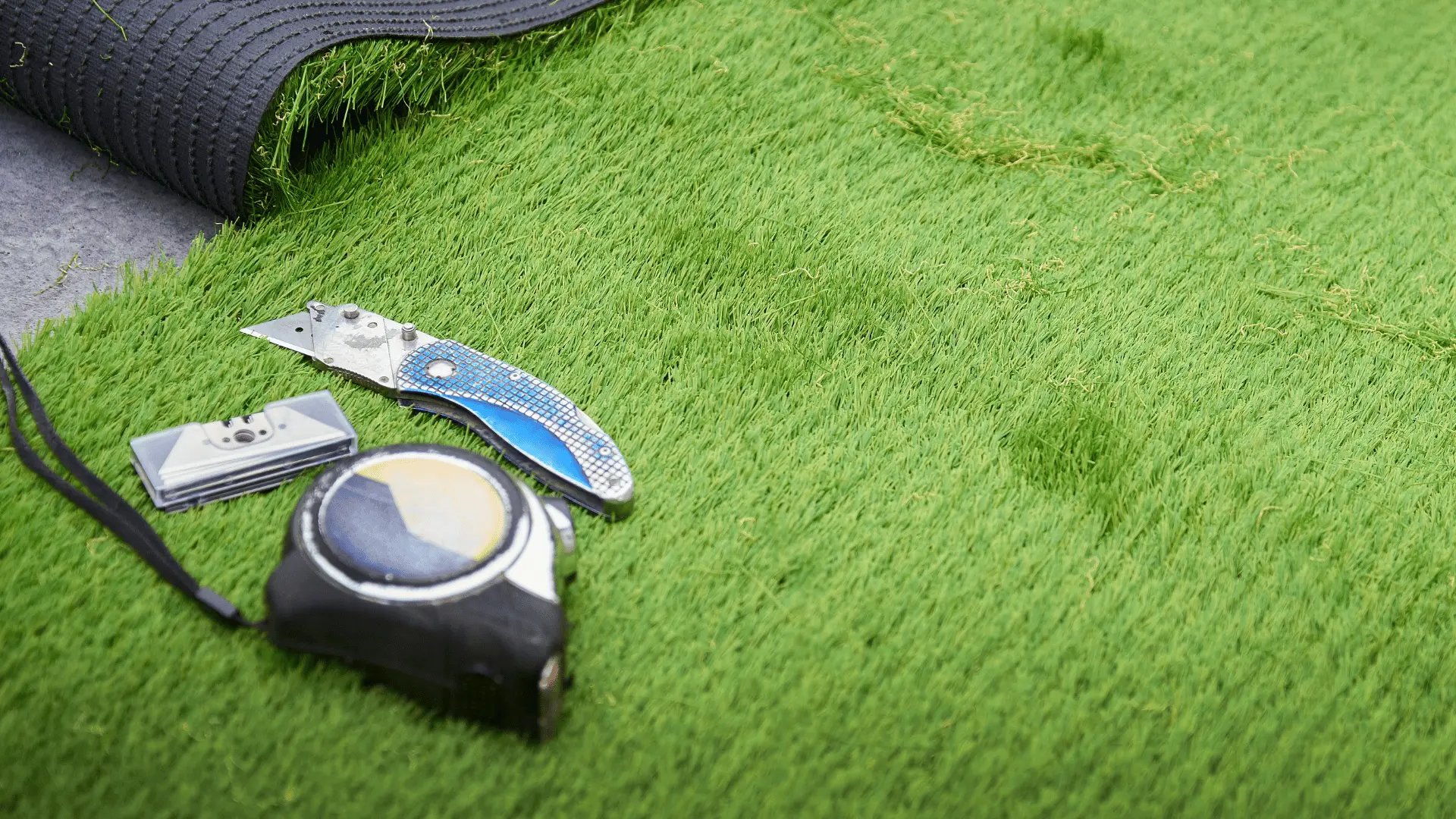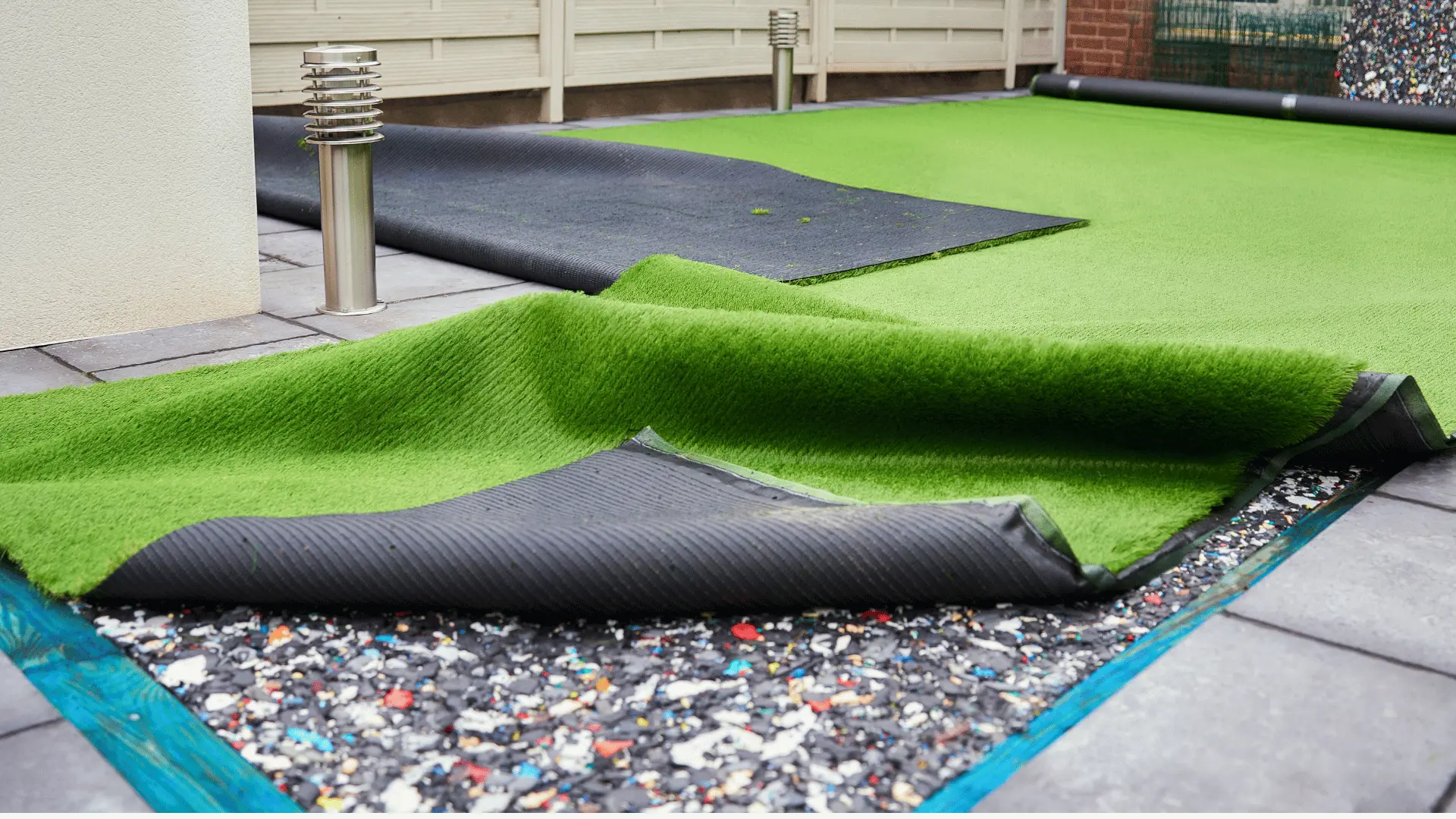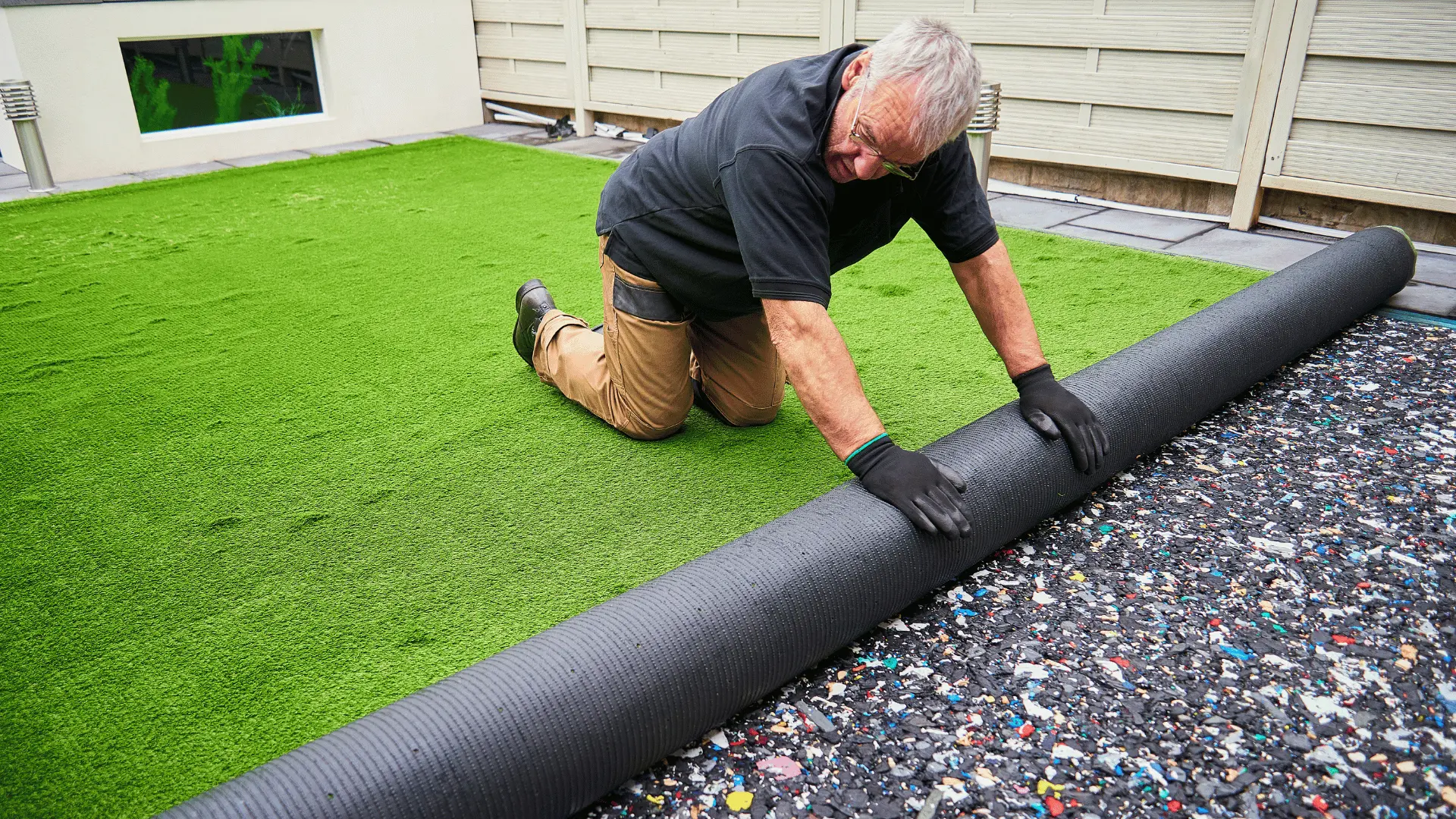It’s no longer just a matter of football stadiums and sports arenas. Artificial grass – grass carpets with synthetic fibres – are now successfully being installed on home lawns and gardens. Their popularity is clearly on the rise today. However, it doesn’t result in anything good for the environment or for us.
At Buildiro, we noticed in our search results how artificial grass is now very popular, and it’s not just due to the catchy marketing of its manufacturers and sellers. When you roll out a few rolls of those bristly carpets in a vibrant green colour in your yard, you can really solve a lot of problems.

What are the advantages of artificial grass?
In terms of functionality, there is no need to worry about overloading artificial grass. You can walk on it in any weather, it is resistant to trampling, and can withstand very intensive use. With a live lawn, you have to be careful not to dance on it after rain, continuously prevent the formation of mould and re-seed it. None of that is a concern with artificial grass – you won’t create a pathway on it, and there won’t be any puddles. Artificial grass is simply a hassle-free solution.
It’s not bothered by drought. Its fresh colour shines in the garden, even when the sun is beating down. Even if it hasn’t rained for months, it still looks great. You may only need to water it to wash off dust. With artificial grass, practically all associated care concerns are eliminated. You don’t have to mow it or trim it. There is no waste in the form of cut grass. There is no need to play around with verticutting and aerating. No more fertilising or spraying is required.
Artificial grass can be installed where it would be impossible to maintain a live lawn due to moisture, shade, sunlight, winter, or drought. In terms of hygiene (and even cleaning up after pets), it’s perfectly easy. That’s why city parents with pets often love this solution. It’s all green and practically maintenance-free.
The popularity and growing social reputation of artificial grass is also due to the fact that sustainability and ecology are increasingly being discussed today. At first glance, it really seems that artificial grass outperforms “unsustainable” live lawns in every way. They are not thirsty, do not need to be fertilised, do not require a gas-powered lawn mower or produce emissions. The shortcomings that we attribute to live lawns do not apply to artificial ones.
All of this is true.
However, it certainly doesn’t mean that synthetic grass carpets are okay. They are, in fact, an even bigger problem than live lawns.

We are artificially creating more problems
The fact is that artificial grass is not real grass.
It provides no food for living organisms, and it effectively limits access to the soil surface on both sides. Underneath the carpet, the chances of survival for all soil invertebrates are reduced, and insects that may want to lay eggs in the soil cannot penetrate the plastic cover. The idea of tiny insects laying eggs in the lawn probably doesn’t evoke sympathy, but what about useful worms?
Artificial grass significantly restricts access to natural materials throughout the entire garden. The decaying roots, leaves, and grass stems all contribute to the nourishment of microorganisms that continuously maintain healthy, nutritious, and fertile soil. Stopping nutrient transport by artificial grass means excluding soil microorganisms from the ecosystem, which leads to a significant collapse.
From a user perspective, there are also a few drawbacks. Firstly, artificial grass tends to heat up quite a bit, certainly more so than natural grass under the same climatic conditions. So, although plastic lawns may stay green during a heatwave, they become unusable for walking, sitting, or playing.
Artificial grass can create a lot of heat in your yard, and that accumulated heat will radiate even at night. This promotes the urban heat island effect and indirectly contributes to global warming (depending on how many artificial lawns are installed together) because it absorbs significantly more radiation than the live grass it displaces.
Artificial grass does not breathe, nor does it remove carbon dioxide from the atmosphere through photosynthesis. That’s how it works normally: plants slowly and gradually remove carbon from the atmosphere, incorporate it into their bodies, and into the soil. However, this slow cycle ends with artificial grass. It offers no active carbon retention. The installation of artificial grass is a process that rapidly releases carbon from the soil, usually when creating a drainage bed or stable base.
You will probably have to say goodbye to water retention on your property, better infiltration, and groundwater replenishment. Non-permeable artificial grass increases surface runoff after heavy rains, leading to saturation of the sewer network at best, and localized flooding at worst.
Plastics go directly into the soil
One big issue we are increasingly dealing with is microplastics around us, in the soil, in water, and in food. Artificial grass is a perfect example of how this ubiquitous microplastic pollution has made its way into our environment. Artificial grass fibres are made of polyethylene, polypropylene, or nylon, all of which are plastics and a source of pollution.

One problem with some artificial grass is loss of colour, fading, particularly those exposed to constant sunlight. Manufacturers try to prevent this with the addition of colour stabilisers, chemicals that you probably wouldn’t want around you or your children. Similar concerns apply to anti-fungal protective coatings.
Artificial grass can be quite a toxic presence. If your dog or cat chews on natural grass while playing, you probably don’t need to visit the vet, but with artificial grass, it’s not at all clear that fibres won’t cause any harm to health.
Another minor issue with artificial grass is that it does not respect the seasons. It may be green in spring and summer, which is fine, but if it fails to change colour in a gloomy winter without snow, it still shines brightly and doesn’t blend in. This constant visual signal is noticeable and important to our mental wellbeing.
Large emissions are also associated with the production and transportation of artificial grass, which must be considered. Emissions are a universal threat, but you can imagine that the delivery of a one-kilogram bag of grass seeds for a natural lawn would produce fewer emissions than a lorry full of artificial grass rolls.
Prefer natural grass over artificial
Everything beautiful comes to an end, and the lifespan of artificial lawns ranges from 10 to 20 years. Like any plastic product, it could be recycled. But as you might suspect, we’re not very good at recycling. These polluted large-scale rolls can only be recycled in specialized plants and require a specific cleaning process. It’s just another waste that we don’t know how to dispose of meaningfully.
And sure, you’ll never get a dandelion or a daisy on an artificial lawn. That’s obviously a trivial point – besides, even traditional lawn enthusiasts don’t really like dandelions or daisies – but that’s actually the point. An artificial lawn is not a real lawn. It’s just an illusion of a perfect lawn. A deception that offers nothing real, only new problems.
You could just as well place pictures of flowers on your flower beds and claim that it’s a more sustainable – maintenance-free and irrigation-free – version of a garden. Living, well-cared-for, and carefully trimmed, thirsty lawns may not be a win for sustainability and the environment, but they are still a fragment of nature.
They live, breathe, release oxygen and absorb carbon dioxide, absorb dust and pollution, create an environment for life, prevent soil erosion, improve water infiltration, and improve mental well-being. Of course, a flowery meadow would be more economical, beneficial, and ecological. But always go for the living lawn instead of the artificial one.
Leave a Reply